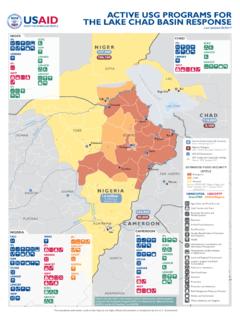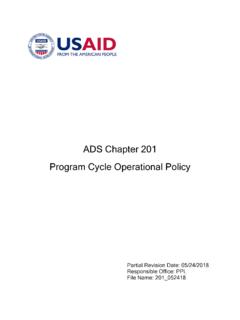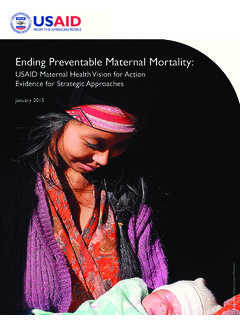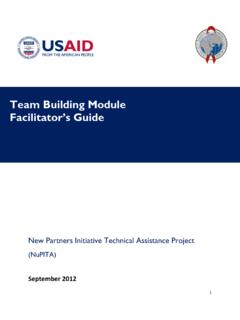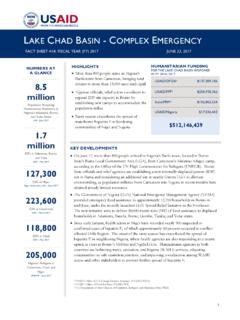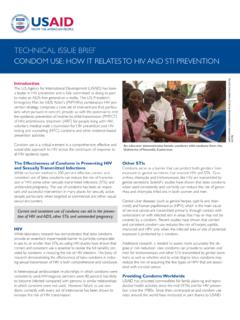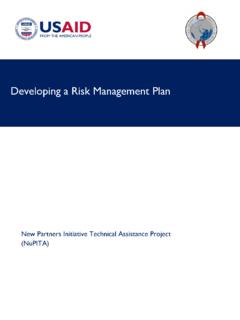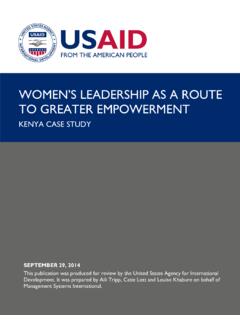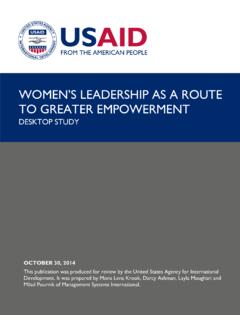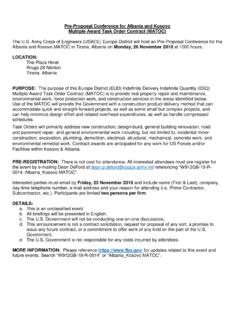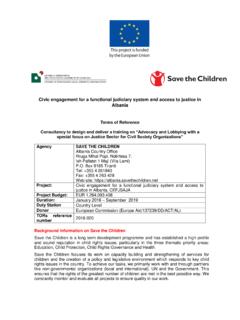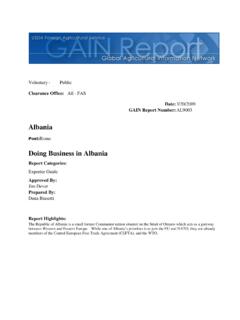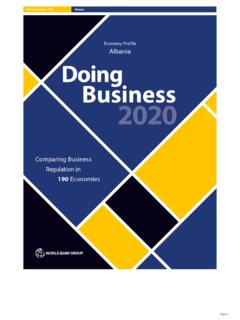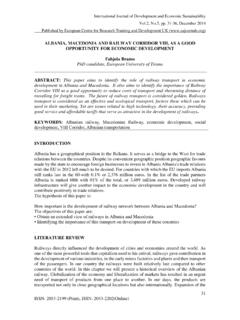Transcription of Gap Analysis of Albania
1 Albania Gap Analysis Strategic Planning & Analysis Division E&E Bureau USAID December 29, 2010 Highlights. Albania s economic and democratic reform progress is Southern Tier CEE average. Albania made substantial gains in first-stage economic reforms early on in the transition, and since 1995, it has undertaken more modest incremental gains. Second-stage economic reforms in Albania lag considerably behind first stage, although steady, albeit modest, gains in second- stage reforms have been realized since the mid-1990s as well.
2 In a business survey in 2008, the absence of reliable electricity was rated as problematic by more Albanian businesses (80% of those surveyed) than any other possible constraints considered. This was followed by burdensome tax rates (60%), challenges stemming from Albania s telecommunications infrastructure (55%), and inadequate skills and education of the work force (53%). Three of these issues, all but burdensome tax rates, were perceived to be more problematic in 2008 than they were in 2005. Democratic reforms in Albania have gone through four apparent stages: (1) rapid and significant democratic reform gains in the early transition years; (2) democratization backsliding from 1992 to 1996; (3) steady advances from 1996 to 2004; and (4) little change or stagnation from 2004 to 2009 (latest year for which data are available).
3 The trends in the seven democracy components tracked by Freedom House generally mirror the trends in the aggregate; in particular, none of the sectors have advanced on balance since 2005-2006. Local governance and civil society are the most advanced democratization areas in Albania ; anti-corruption reforms are the least advanced. According to Freedom House, of the Southern Tier CEE countries, only Kosovo has greater corruption than Albania . Of the nine Southern Tier CEE countries, only the economies of Bulgaria and Romania have outperformed Albania s economy as measured by the MCP macro-economic performance index.
4 However, progress across the economic performance dimensions in Albania is very uneven. From 2003 to 2008, Albania s economy expanded by an annual average rate of 6%, well above global standards as well as Eastern Europe standards. Albania s economy weathered the global economic crisis in 2009 relatively well, due in no small part to its relative isolation from the global economy. Macroeconomic imbalances in Albania s economy have been significant in recent years. Although the size of the export sector in Albania remains small by regional standards, its growth has been outpacing GDP growth since at least early 2002.
5 Similarly, foreign direct investment (FDI) as a percent of GDP has been increasing in Albania in recent years, although it too remains low compared to the volume of FDI flows to most other countries in the region. As a percentage of GDP, remittances have exceeded FDI inflows in Albania ; however, the differential has been narrowing as FDI has increased and remittances have decreased as a percentage of GDP. 1 Of the Southern tier CEE countries, only Kosovo lags more on human capital than does Albania . Albania s human capital profile is very skewed or unbalanced; the population is relatively healthy but also also relatively poor and poorly educated.
6 As elsewhere in the Balkans, the unemployment rate in Albania is very high, perhaps close to 14% today. Test results of Albanian students are quite poor, low relative to OECD standards. This was true both in 2006 and 2009 with test results from the Program for International Student Assessment (PISA). Albanian students in 2009 performed at 77% of OECD standards; in 2006, 74%. Secondary and tertiary enrollment rates in Albania also lag behind OECD as well as CEE standards, although the rates in Albania have been increasing overall in recent years.
7 Educational enrollments are notably higher in Tirana than they are in the rest of the country. Albania s health indicators are quite favorable. Life expectancy in Albania , at 77 years, exceeds the CEE average of 75 years. Life expectancy in Albania has been steadily increasing; in 1990, it was only 72 years. Overall, Albania s peace and security score is low by CEE standards. By this measure, of all the CEE countries, only Kosovo is less peaceful and secure than Albania . 2 Introduction. This Analysis draws largely on the dataset and methodology of the Europe & Eurasia Bureau s Monitoring Country Progress (MCP) system.
8 The core of the MCP system consists of five indices: (1) economic reforms; (2) democratic reforms; (3) macroeconomic performance; (4) human capital; and (5) peace and security. We draw on readily available public data and standardize the metrics to a 1 to 5 scale in which a 5 represents the most advanced standards worldwide. Supplemental data and Analysis are drawn from a handful of Albania -specific documents, primary among them are the World Bank, Albania , the New Growth Agenda (November 2010), the European Commission, Analytical Progress Report: Albania (November 2010), UNDP, Human Development Report of Albania (2010), and the Economist Intelligence Unit, Albania (November 2010).
9 Economic and democratic reforms (Figure 1). Figure 1 highlights economic and democratic reform progress of the three geographic sub-regions that the MCP system has been tracking over the years: the eight Northern Tier Central & Eastern Europe (CEE) countries; the nine Southern Tier CEE countries; and the twelve Eurasian countries. Economic reform data are drawn from the EBRD, Transition Report (November 2010); democratic reform data from Freedom House, Nations in Transit (June 2010). Both sources provide E&E region-specific data and Analysis .
10 Reform changes from the previous year (2009-2010 for economic reforms; 2008-2009 for democratic reforms) are highlighted by arrows. Albania s reform progress is roughly average for the twenty-nine transition country region or, similarly, Southern Tier CEE average on both reform dimensions. No measurable economic reform progress was made in Albania in 2010 by EBRD measures; some backsliding in democratization occurred in Albania in 2009 (latest year available) according to Freedom House scores. Economic reforms (Figures 2-6).
